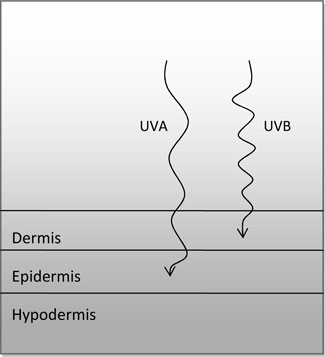Section Two- UV Light and Tanning
There are three types of UV light: UVC, UVB and UVA. UVC light is the most harmful, but it does not penetrate the earth’s atmosphere and is therefore not relevant in the tanning process. UVB and UVA light does penetrate the earth’s atmosphere and affects our skin. UVB light can burn the outer layer of the skin (dermis) and is most responsible for erythema (sunburn). UVA light penetrates more deeply into the secondary layers of the skin (epidermis) and can weaken the skin’s inner connective tissue.

The UV radiation that is emitted from sources in indoor tanning facilities can be two to five times more powerful than the UV radiation which occurs naturally from the sun. Intensity is dependent on bulb design and output. When tanning indoors, your skin has less time to warn you before serious damage occurs. This is especially true of beds that produce mostly UVA light (traditional RUVA beds). UVA light can cause deep tissue damage while not turning the skin red. UVB light-emitting beds (traditional Wolff System beds) produce UV light that is more similar to the sun.
Regardless of the UV light emitted, there is no such thing as a “no burn” bed. Skin damage will occur from either a UVA or UVB bed. The difference is the depth of damage within the skin layers.